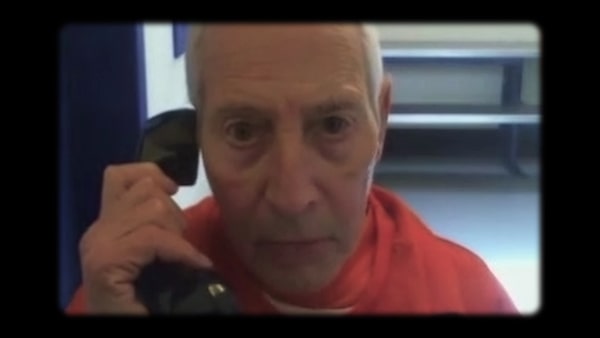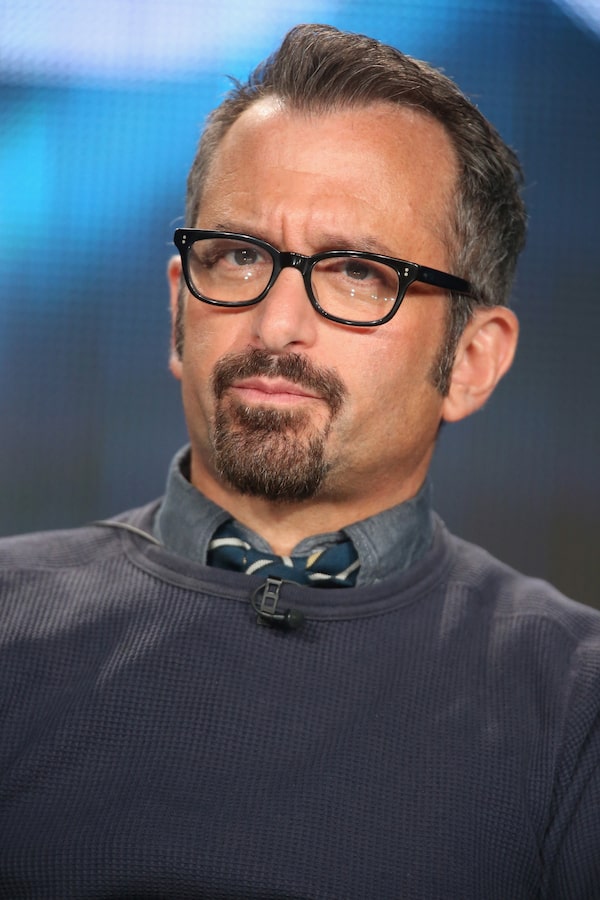
The Jinx Part Two still manages to surprise, as the series takes viewers behind the scenes to show the process of bringing Robert Durst in for arrest after The Jinx’s debut nine years ago.Supplied
In the 2015 series finale of The Jinx: The Life and Deaths of Robert Durst, filmmaker Andrew Jarecki presented the suspected three-time murderer with a smoking gun: a handwriting comparison linking him to the 2000 murder of his best friend, Susan Berman. Durst played it cool on camera but then went into the bathroom with a hot mic.
“There it is. You’re caught,” the real estate heir muttered to himself. “What the hell did I do? Killed them all, of course.”
That’s where the story wrapped, at least onscreen. In real life, authorities arrested the millionaire the day before the finale aired. He was subsequently tried and convicted for the first-degree murder of Berman. Months later, he was indicted for the second-degree murder of his first wife, Kathleen (Kathie) McCormack, who disappeared in 1982. Durst died in prison before that trial could start, in January, 2022, at the age of 78.
It was a logical and satisfying end to a cold case that plagued authorities for decades. So what compelled Jarecki to craft a six-episode continuation of The Jinx, and what did he feel he could add to the same true-crime landscape he’d helped to create?
As it turns out, the original story was just the beginning.
The Jinx returned April 21 to Crave (and Max in the U.S.) with the aptly titled episode Why Are You Still Here? In it, Jarecki thrusts viewers back into Durst’s world and catches everyone up on the events from the first six episodes of the award-winning show.
Then, the series takes viewers behind the scenes to show the process of bringing Durst in for arrest after The Jinx’s debut nine years ago. As the episodes progress they show what life was like for Durst behind bars, who stood by his side, how the trial came together and what it ultimately took to bring him down. Everyone knows the ending, but it’s how these characters got to the finish line that winds up being the most fascinating part.

Director Andrew Jarecki speaks onstage during 'The Jinx: The Life and Deaths of Robert Durst' panel at the HBO portion of the 2015 Winter Television Critics Association press tour in Pasadena, Calif., on Jan. 8, 2015.Frederick M. Brown/Supplied
It’s unclear if filmmakers have ever worked with authorities to bring a murderer down like they did in this case. While Jarecki wasn’t initially liaising with police, he realized during filming he would have material to share. Procuring useable evidence became a high-stakes mission, so he consulted with independent experts (including Marcia Clark, prosecutor on the O.J. Simpson trial ) on how to proceed.
Also fascinating is to see how Durst acted at the beginning, middle and end of the first Jinx, from his eagerness early on to his final days going on the run. (Durst initially contacted the director to work together after seeing his 2010 fictional film, All Good Things, which was inspired by Durst’s story.)
As the episodes unfold, The Jinx Part Two also examines the people Durst surrounded himself with and those who allowed him to get away with such terrible acts. Jarecki paints a picture of a rich boys’ club with secret motivations and friendships fuelled by fear.
There’s the juror who befriended Durst following his 2003 acquittal in the murder of his former neighbour, Morris Black. Or Durst’s second wife, Debrah Lee Charatan, who may have married the man purely so she didn’t have to testify against him. A mistress, life-long friends and former lawyers also weave in and out as the episodes unfold.
One of the most remarkable scenes happens early on, however, when investigators and friends of the deceased gather to watch that initial Jinx finale. Their emotional reactions to Durst’s confession make the scene one of the most memorable in true crime history. There are a few key moments like that peppered throughout, partly thanks to Jarecki’s willingness to break the fourth wall and insert himself as a character in this story.
It’s a good move, at least for the show. The filmmaker had a decades-long relationship with Durst and knew the case better than anyone. As a result, scenes such as the one in which Durst turns Jarecki away for a requested visit or when the director learns about Durst’s death on-camera feel personal. Jarecki is open about his conflicts with the man. He once hired a security team to protect himself and his family from Durst for fear of retaliation.
At times, that participation feels self-congratulatory. Then again, The Jinx resuscitated a cold case and brought a murderer to justice with solid evidence. Isn’t some boasting deserved?
Then there’s the access. Unlike the first series, which picked up years after the crimes, this one was filmed in real time. Durst refused to participate in Part Two, but Jarecki pieced together a narrative that includes trial footage and recordings of Durst from jail. He secured interviews with people who refused to participate in the first series, like Durst and Berman’s other best friend, Nick Chavin. He also speaks with members of both the defense and prosecution, along with the trial judge and authorities who worked on the case.
That diligence means The Jinx Part Two still manages to surprise, at least in the first four episodes made available to the press. There are huge reveals about Berman’s potential involvement in Kathie Durst’s disappearance, for example, and intimate conversations that never made it to trial. That keeps the series progressing at a decent pace, peeling back more layers you don’t necessarily see coming.
None of these reveals match that original, shocking hot mic moment, of course. Not even the filmmakers knew they had that nugget until two years later, in post-production. It’s unlikely that any coming reveals in the final two episodes will compare. Still, The Jinx Part Two feels like the ending this true crime doc always needed, one that gives new insight into two important camps: those who protected Durst and those who worked tirelessly to bring him to justice.